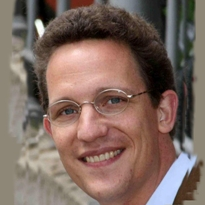Diode-Pumped, Ultra-Short Pulse Lasers
A special issue of Applied Sciences (ISSN 2076-3417). This special issue belongs to the section "Optics and Lasers".
Deadline for manuscript submissions: closed (31 July 2015) | Viewed by 89776
Special Issue Editor
2. Helmholtz-Institute Jena, Fröbelstieg 3, 07743 Jena, Germany
Interests: POLARIS-a diode-pumped laser system of the petawatt-class; laser-induced electron acceleration; generation of secondary radiation pulses with laser-accelerated electrons; laser-induced ion acceleration; optical diagnostics of relativistic laser-plasma interactions; development of few-cycle pulses in the mid-IR for ultra-fast probing of plasma wakefield accelerators; new laser materials and development of new amplifier designs
Special Issues, Collections and Topics in MDPI journals
Special Issue Information
Dear Colleagues,
Triggered by the invention of the laser more than 50 years ago, we have witnessed an almost unprecedented revolution in fundamental research influencing virtually every field in natural and life sciences and industry. It is foreseeable that this unsurpassed development will continue or even accelerate in the future. Furthermore, the increasing breadth of applications of lasers is no less impressive. As an example, lasers have proven to be potential candidates for next-generation particle accelerators. Their application might pave the way towards the availability of truly table-top sources of high-energy particle and secondary radiation pulses. Eventually, such sources might revolutionize the research which can be conducted in university-scale laboratories, which is nowadays still restricted to large-scale research infrastructures. A large number of such applications call for the availability of pulsed laser sources reaching extremely high peak powers, high average powers and single-pulse durations of the order of 10’s of ps and shorter. For the realization of such laser systems, diode pumping in combination with suitable active laser materials is the central issue. Here, significant progress has been achieved over the last years, highlighted by a few large-scale laser projects, which entirely rely on diode-pumped amplification technology.
This Special Issue of the journal Applied Sciences “Diode-Pumped, Ultra-Short Pulse Lasers“ aims to cover recent advances in the development of lasers with ultra-high peak powers, high average powers and/or sub-10 ps pulse durations, which are directly or indirectly pumped by high-power diode lasers.
Prof. Dr. Malte C. Kaluza
Guest Editor
Manuscript Submission Information
Manuscripts should be submitted online at www.mdpi.com by registering and logging in to this website. Once you are registered, click here to go to the submission form. Manuscripts can be submitted until the deadline. All submissions that pass pre-check are peer-reviewed. Accepted papers will be published continuously in the journal (as soon as accepted) and will be listed together on the special issue website. Research articles, review articles as well as short communications are invited. For planned papers, a title and short abstract (about 100 words) can be sent to the Editorial Office for announcement on this website.
Submitted manuscripts should not have been published previously, nor be under consideration for publication elsewhere (except conference proceedings papers). All manuscripts are thoroughly refereed through a single-blind peer-review process. A guide for authors and other relevant information for submission of manuscripts is available on the Instructions for Authors page. Applied Sciences is an international peer-reviewed open access semimonthly journal published by MDPI.
Please visit the Instructions for Authors page before submitting a manuscript. The Article Processing Charge (APC) for publication in this open access journal is 2400 CHF (Swiss Francs). Submitted papers should be well formatted and use good English. Authors may use MDPI's English editing service prior to publication or during author revisions.
Keywords
- ultra-short laser pulses
- diode-pumped amplification
- ultra-high peak power
- high average power
- laser materials
- cryogenic cooling





